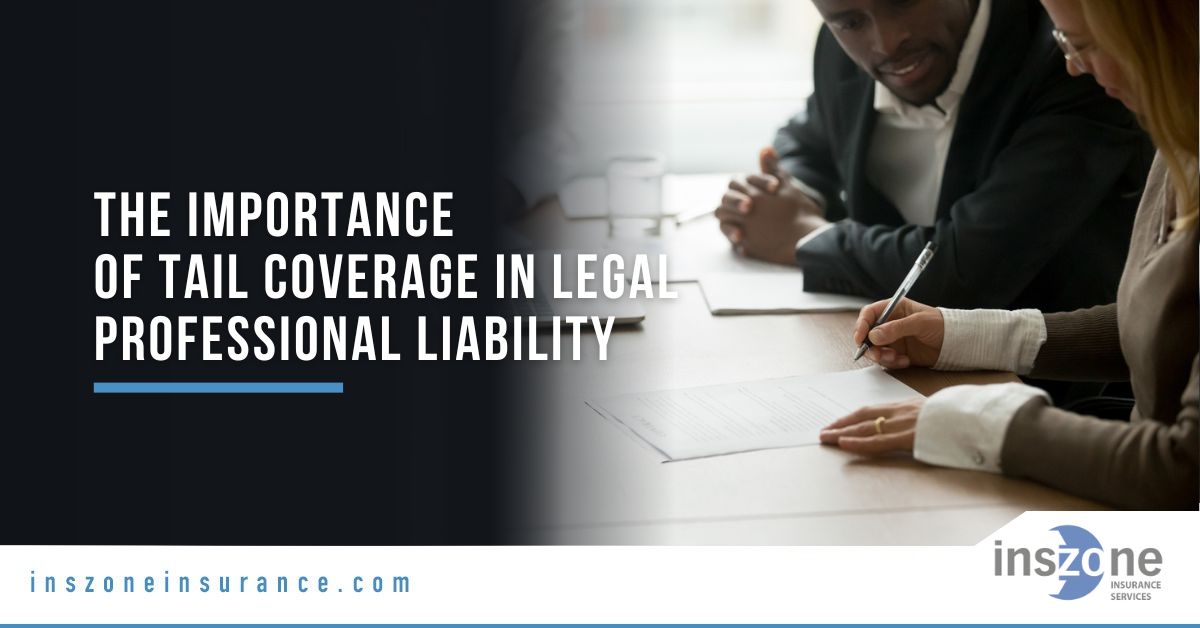
Table of Contents
- Introduction
- Understanding Tail Coverage
- Why Tail Coverage Is Essential
- Who Needs Tail Coverage?
- Cost Considerations
- Tail Coverage vs. Prior Acts Coverage
- How to Obtain Tail Coverage
Introduction
Healthcare, law, and consulting professionals often face delayed claims that arise well after services have been provided. These late-emerging issues can lead to serious financial and legal consequences without proper insurance safeguards. In professional services, liability often lingers even after a policy lapses. This is where an understanding of how tail coverage works becomes essential for those seeking lasting protection. Professionals risk facing claims years after services are rendered, making tail coverage a vital shield once the primary policy period ends.
When a claims-made policy expires, coverage for newly reported claims generally stops—even if the incident occurred while the policy was active. Tail coverage, also known as an extended reporting period (ERP) endorsement, bridges this gap, safeguarding professionals from potential financial devastation due to late-emerging claims. Understanding the mechanics of coverage extensions clarifies risk and provides peace of mind when transitioning careers or retiring.
Understanding Tail Coverage
Tail coverage (ERP) is an endorsement that allows the insured to report claims made after a primary insurance policy ends, provided the act or omission occurred during the original policy period. Without this extension, claims reported after policy expiration—even those tied to acts performed while insured—would not be covered. This makes tail coverage particularly critical in professions where liability can arise long after services are rendered, and is why many experts recommend reviewing tail options whenever there’s a career shift, business closure, or retirement.
According to Insureon, professional liability claims can often be delayed, with claimants sometimes filing years after the original service or transaction. This delay highlights the importance of having an effective extended reporting period to minimize personal risk.
Why Tail Coverage Is Essential
Claims related to professional services do not always surface immediately. For instance, a client could allege negligence or error in judgment months or years after a project concludes. Without tail coverage, the professional bears the full financial brunt of legal defense costs and any awarded damages, potentially endangering personal assets and lifelong savings. Tail coverage is a cornerstone of prudent risk management, especially in high-liability fields such as medicine, law, and financial consulting.
In a world of evolving legal environments, claims are becoming increasingly common to emerge well past the policy term. For example, a physician may retire only to discover a malpractice claim filed years after their final treatment of a patient. Tail coverage fills this insurance gap, offering security against unpredictable allegations and protracted legal proceedings. As detailed by Justia, settlement and defense costs have increased, buttressing the need for ongoing protection through tailored endorsements.
Who Needs Tail Coverage?
Certain professions are particularly at risk of post-policy claims and benefit from tail coverage, including:
- Medical Practitioners: Physicians, surgeons, and nurses whose procedures or care may receive scrutiny long after the patient interaction.
- Legal Professionals: Attorneys representing clients where the statute of limitations for litigation is extended or legal outcomes are contested years later.
- Consultants and Advisors: IT professionals, business consultants, and financial planners who may be held liable for advice that results in loss, damage, or unintended outcome at a future date.
In summary, any professional whose services carry the possibility of delayed claims should seriously consider the crucial financial protection that tail coverage provides.
Cost Considerations
The cost of tail coverage depends on several variables, such as professional specialty, claims history, location, and the duration of extended reporting. Generally, premiums for tail coverage are assessed as a percentage of the final annual premium under the expiring policy, often ranging between 100% and 300%. For example, if a consultant pays $4,000 a year in annual premiums, tail coverage for a set reporting period may cost between $4,000 and $12,000. This may seem costly, but the costs are usually far less than the expenses involved in defending or settling a significant liability claim out of pocket.
It is essential to consider both short—and long-term exposure and the financial risks associated with uninsured claims. Business owners may find value in shopping around and negotiating terms, as some insurers offer flexible payment plans or bundled extended reporting options. Personalizing the tail coverage to reflect your risk profile can also help you manage expenses without compromising essential protection.
Tail Coverage vs. Prior Acts Coverage
Tail coverage and prior acts coverage are often confused, but they serve distinct purposes. Both play roles in ensuring claims-made policies remain robust during professional transitions, but they address different gaps:
- Tail Coverage: This protection protects against claims reported after policy cancellation or non-renewal for acts performed during the original coverage period. It typically cannot be transferred to a new insurer and must be added to the expiring policy.
- Prior Acts Coverage: This option is included in new claims-made policies and covers incidents that happened before the new policy’s start date, as long as there was continuous previous coverage. It helps professionals changing insurers avoid coverage gaps for their previous acts.
Awareness of these nuanced differences enables professionals to better evaluate coverage needs during employer changes, acquisitions, or retirements.
How to Obtain Tail Coverage
Professionals looking to obtain tail coverage can follow these step-by-step strategies:
- Assess Your Needs: Carefully evaluate your exposure to future claims based on your role and industry risks.
- Consult with Your Insurer: Discuss available options directly with your provider—they may tailor coverage length and scope to your needs.
- Compare Across Providers: Don’t assume all endorsements are alike. Obtain multiple quotes and compare limitations, premiums, and customer service.
- Examine Policy Language: Read the fine print regarding covered acts, timeframes, and exclusion clauses to avoid surprises when a claim is reported.
Planning for coverage continuity before exiting an employer or canceling your policy empowers you to navigate career changes, retirement, or acquisitions without exposing yourself to significant liability risks from your professional past.